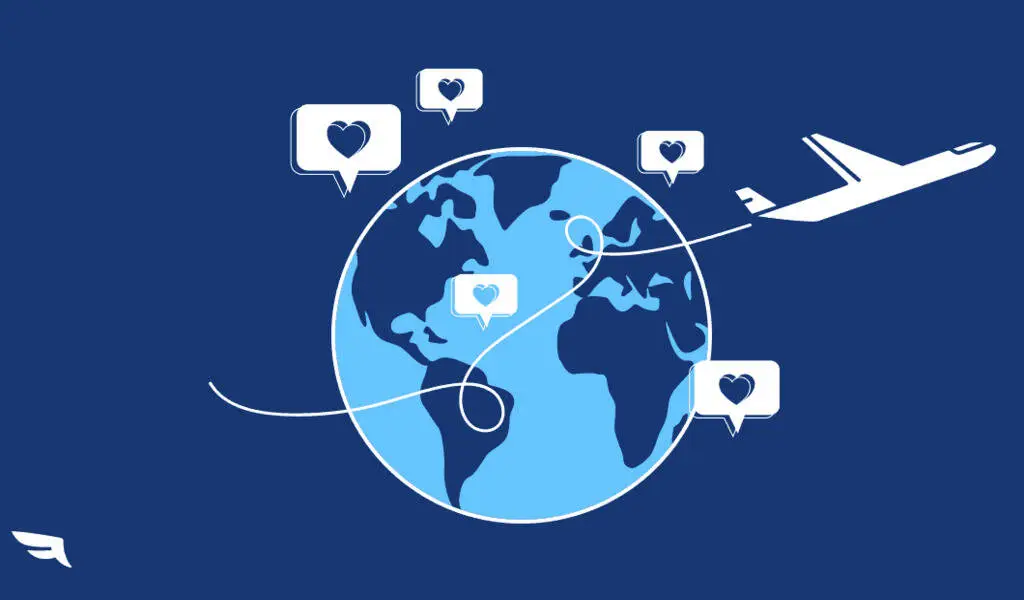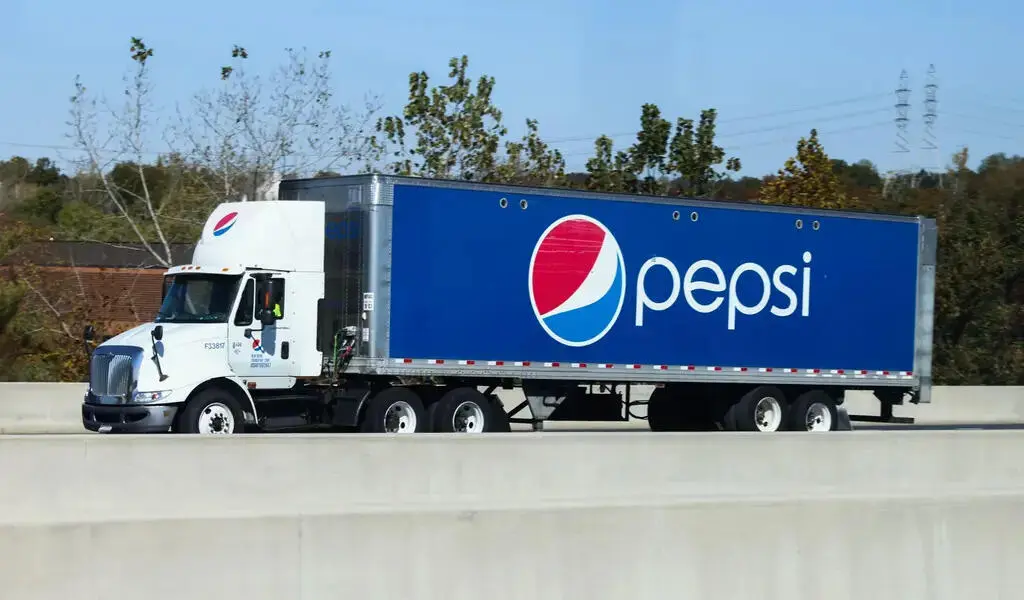5 Ways Travel Brands Can Leverage Digital Marketing to Generate Sales

If there was an industry that literally shut down due to the COVID-19 pandemic, it was the travel industry.
Countries shut down their borders, flights were canceled, refunds demanded, and everyone had to stay home to wait out the crisis.
As we regain some sense of normalcy, many travels are still uncertain and skeptical about starting over. Those that have taken the bold step to open their doors know that driving sales won’t be easy.
That’s why today’s article focuses on digital marketing strategies that brands can leverage to generate sales.
Cold Calling

The cold calling strategy works hand in hand with your other strategies to maximize deal closure.
The inquiries that come through web forms and other online engagements have the potential to become deals. So when you pick up the phone to follow up, you increase this possibility.
Best practices include:
- Focus on the prospect. When making the first call, let it be about the customer. Focus on their needs and address their concerns. Make them feel comfortable enough to share their idea of the perfect trip and use the information to deduce the best travel package for them.
- Know your stuff. Suppose your prospect wants to know the cheapest months to go skiing—do you have the answer on hand? Having in-depth knowledge of your industry including season-related activities is critical.
- Throw out your script. Travel isn’t like other products or services. Work on your introduction but after that go with the flow. Let their interests guide the travel destinations you share with them. Just don’t overwhelm them.
Email Marketing

As far as communication goes, email marketing is perfect for travel brands. It generates good open rates allowing you to share dreamy locations, offers, and user-generated content to warm up leads to conversion.
Here are top ways to increase conversions;
- Use eye-catching subscription forms on your website and blog posts. Introducing a subscription form allows interested people to sign up for more information from your brand.
- Offer lead magnets. Offer discount codes, travel brochures, interactive on-location videos, and useful tips in exchange for subscription and make good on your promises. You won’t just secure new subscribers, but customers too.
- Consider working with a professional SDR agency. These companies have the expertise to connect your business with new leads and customers. They offer a range of competitively priced bouquets to match your needs.
- Don’t ignore abandoned searches. Automate your email marketing tool to reach out to subscribers who abandoned their searches. Entice them to continue their search by sharing hot choices and deals in the areas they had surfed.
Influencer Marketing

Whether you’re speaking to thrill-seekers, families, burned-out folk in need of a break, or couples celebrating anniversaries, these people have several things in common.
They are considering transportation options, lodging, entertainment, and other travel logistics. At the height of it, these daydreamers want affordable, convenient, but exciting adventures.
While the beautiful locations listed on your travel website are great but travel influencers are the cherry topping.
Through striking photos and reviews, they create stylish and eye-catching content to help your audience imagine themselves in those destinations. Imagine and then go about planning something similar
Here are some benefits of collaborating with a travel influencer:
- Help increase brand awareness. Do you offer great services, reasonable prices, and trips to wonderful destinations? Getting the word out can be tough, but influencers, who typically document their entire experiences, can shed light on your brand across social platforms and strengthen your position in your industry.
- Help allay concerns about safety protocols. Safety, hygiene, and overall wellness are major concerns among travelers. Travel influencers promote the health and safety narrative by showing what you’re doing to keep travelers safe.
- Help convert planners to trip bookers. Think with Google estimates that up to 55 percent of leisure travelers go on 1-2 trips annually but spend a considerable amount of time planning. Allowing your influencer to offer their followers special travel discounts may encourage audiences to make bookings faster.
Run Promotions

The Think with Google research we alluded to earlier revealed that offering deals to leisure travelers can increase spontaneity.
30 percent would consider going on a trip they hadn’t planned on while a further 25 percent would travel to destinations they weren’t familiar with.
That’s the power of running promotions.
Here are promotional strategies worth considering:
- Offer cashback and discounts. Include words like “limited period offer,” “discounts,” or “cashback” in your marketing copy to attract online searchers to your brand. Also, consider issuing discount vouchers for their next trip to encourage repeat bookings.
- Gift customers with goodies that keep you top of mind. There are plenty of goodies you can come up with, including toiletry bags, custom water bottles, headphones, restaurant gift cards, and calendars.
- Toot your promos on social media. According to Hinge Marketing, 60 percent of buyers will look up a brand on social before buying from them. Maintain professional but fun and regularly updated social platforms.
Chatbot Marketing

We’re living in the era of self-research. People go online to look up different travel destinations, compare offers, and ask questions remotely before speaking to human representatives.
Adding a chatbot on your website facilitates 24-hour interactions with would-be travelers, current and past customers alike.
These people don’t have to fill up forms and wait to be contacted or hold the line for the next available agent. Your bot provides helpful information to engage visitors and encourage them to buy.
Here are practical ways chatbots can help improve customer experiences and push sales:
- Taking over human roles to improve efficiency and cut overhead costs. Bots can book airline tickets, make hotel reservations, and even recommend restaurants and interesting places to visit.
- Help with budgeting. Chatbots share vacation packages, promotions, and answer commonly asked questions to help people plan their travel budget.
- Gathering data. Chatbots gather engagement data your brand can use for retargeting and future targeting campaigns. Post-trip, the bot can share feedback forms with customers to gather information about their travel experiences.
People Also Read:
Tips For Creating A More Productive Workplace
Five Common Construction Issues and Solutions
What is Prince2 Certification and How Beneficial is it?
Elon Musk Says he’s Considering Creating A New Social Media Platform

News
Trudeau’s Gun Grab Could Cost Taxpayers a Whopping $7 Billion

A recent report indicates that since Trudeau’s announcement of his gun buyback program four years ago, almost none of the banned firearms have been surrendered.
The federal government plans to purchase 2,063 firearm models from retailers following the enactment of Bill C-21, which amends various Acts and introduces certain consequential changes related to firearms. It was granted royal assent on December 15 of last year.
This ban immediately criminalized the actions of federally-licensed firearms owners regarding the purchase, sale, transportation, importation, exportation, or use of hundreds of thousands of rifles and shotguns that were previously legal.
The gun ban focused on what it termed ‘assault-style weapons,’ which are, in reality, traditional semi-automatic rifles and shotguns that have enjoyed popularity among hunters and sport shooters for over a century.
In May 2020, the federal government enacted an Order-in-Council that prohibited 1,500 types of “assault-style” firearms and outlined specific components of the newly banned firearms. Property owners must adhere to the law by October 2023.
Trudeau’s Buyback Hasn’t Happened
“In the announcement regarding the ban, the prime minister stated that the government would seize the prohibited firearms, assuring that their lawful owners would be ‘grandfathered’ or compensated fairly.” “That hasn’t happened,” criminologist Gary Mauser told Rebel News.
Mauser projected expenses ranging from $2.6 billion to $6.7 billion. The figure reflects the compensation costs amounting to $756 million, as outlined by the Parliamentary Budget Office (PBO).
“The projected expenses for gathering the illegal firearms are estimated to range from $1.6 billion to $7 billion.” “This range estimate increases to between $2.647 billion and $7 billion when compensation costs to owners are factored in,” Mauser stated.
Figures requested by Conservative MP Shannon Stubbs concerning firearms prohibited due to the May 1, 2020 Order In Council reveal that $72 million has been allocated to the firearm “buyback” program, yet not a single firearm has been confiscated to date.
In a recent revelation, Public Safety Canada disclosed that the federal government allocated a staggering $41,094,556, as prompted by an order paper question from Conservative Senator Don Plett last September, yet yielded no tangible outcomes.
An internal memo from late 2019 revealed that the Liberals projected their politically motivated harassment would incur a cost of $1.8 billion.
Enforcement efforts Questioned
By December 2023, estimates from TheGunBlog.ca indicate that the Liberals and RCMP had incurred or were responsible for approximately $30 million in personnel expenses related to the enforcement efforts. The union representing the police service previously stated that the effort to confiscate firearms is a “misdirected effort” aimed at ensuring public safety.
“This action diverts crucial personnel, resources, and funding from tackling the more pressing and escalating issue of criminal use of illegal firearms,” stated the National Police Federation (NPF).
The Canadian Sporting Arms & Ammunition Association (CSAAA), representing firearms retailers, has stated it will have “zero involvement” in the confiscation of these firearms. Even Canada Post held back from providing assistance due to safety concerns.
The consultant previously assessed that retailers are sitting on almost $1 billion worth of inventory that cannot be sold or returned to suppliers because of the Order-In-Council.
“Despite the ongoing confusion surrounding the ban, after four years, we ought to be able to address one crucial question.” Has the prohibition enhanced safety for Canadians? Mauser asks.
Illegally Obtained Firearms are the Problem
Statistics Canada reports a 10% increase in firearm-related violent crime between 2020 and 2022, rising from 12,614 incidents to 13,937 incidents. In that timeframe, the incidence of firearm-related violent crime increased from 33.7 incidents per 100,000 population in 2021 to 36.7 incidents the subsequent year.
“This marks the highest rate documented since the collection of comparable data began in 2009,” the criminologist explains.
Supplementary DataData indicates that firearm homicides have risen since 2020. “The issue lies not with lawfully-held firearms,” Mauser stated.
Firearms that have been banned under the Order-in-Council continue to be securely stored in the safes of their lawful owners. The individuals underwent a thorough vetting process by the RCMP and are subject to nightly monitoring to ensure there are no infractions that could pose a risk to public safety.
“The firearms involved in homicides were seldom legally owned weapons wielded by their rightful owners,” Mauser continues. The number of offenses linked to organized crime has surged from 4,810 in 2016 to a staggering 13,056 in 2020.
“If those in power … aim to diminish crime and enhance public safety, they ought to implement strategies that effectively focus on offenders and utilize our limited tax resources judiciously to reach these objectives,” he stated.
Related News:
Millennials in Canada Have Turned their Backs on Justin Trudeau
Millennials in Canada Have Turned their Backs on Justin Trudeau
World
Russian Arms Dealer Viktor Bout Back in Business After Biden Prisoner Exchange

Viktor Bout, the infamous Russian arms dealer who was exchanged two years ago for Brittney Griner by President Biden, has reportedly returned to arms trading, as detailed in a report by the Wall Street Journal.
The Wall Street Journal has revealed that Vikto Bout, infamously dubbed the “merchant of death,” is seeking to facilitate the sale of small arms to the Houthis. A report indicates that Houthi representatives met with Bout in Moscow in August to discuss the acquisition of $10 million in automatic weapons.
Nonetheless, the anticipated arms deal remains unfulfilled, as indicated by the report.
Reports indicate that the weapons being discussed do not encompass larger systems such as anti-ship or anti-air missiles, which could represent a considerable risk to U.S. military operations in the area.
Requests for comment from the WSJ regarding Bout’s alleged involvement in the arms trade went unanswered by the Kremlin and Russia’s Ministry of Defense. Steve Zissou, an attorney who provided legal representation for Bout during his time in U.S. custody, refrained from commenting on the possibility of Bout’s meetings with the Houthis.

Viktor Bout, the notorious Russian arms dealer was exchanged for Brittney Griner – CNN Image
Viktor Bout released in 2022
Bout, who became affiliated with Russia’s Kremlin-loyal Liberal Democratic Party following his release in a prisoner swap in December 2022, has kept a low profile since his return.
Bout was taken into custody in Thailand in 2008 and subsequently extradited to the United States, where he faced conviction in 2012 on charges associated with arms trafficking, resulting in a 25-year prison sentence.
For almost twenty years, Bout stood out as one of the globe’s most notorious arms dealers, providing weaponry to unrecognized governments and insurgent factions throughout Africa, Asia, and South America. The activities he conducted served as the basis for the 2005 film Lord of War.
Even after his conviction and imprisonment, reports indicate that Bout’s network persisted in its operations, contributing to conflicts in some of the globe’s most perilous areas.
Related News:
Former US Marine Paul Whelan Released From Russian Prison
Business
PepsiCo Reduces Revenue Projections As North American Snacks And Key International Markets Underperform.

(VOR News) – In the third quarter of this year, Pepsi’s net income was $2.93 billion, which is equivalent to $2.13 per share. This was attributed to the company.
This is in stark contrast to net income of $3.09 billion, which is equivalent to $2.24 per share, during the same period in the previous year. The company’s earnings per share were $2.31 when expenses were excluded.
Net sales decreased by 0.6%, totaling $23.32 billion. Organic sales increased by 1.3% during the quarter when the effects of acquisitions, divestitures, and currency changes are excluded.
Pepsi’s beverage sales fell this quarter.
The most recent report indicates that the beverage and food sectors of the organization experienced a 2% decline in volume. Consumers of all income levels are demonstrating a change in their purchasing habits, as indicated by CEOs’ statements from the previous quarter.
Pepsi’s entire volume was adversely affected by the lackluster demand they encountered in North America. An increasing number of Americans are becoming more frugal, reducing the number of snacks they ingest, and reducing the number of times they purchase at convenience stores.
Furthermore, Laguarta observed that the increase in sales was partially attributed to the election that occurred in Mexico during the month of June.
The most significant decrease in volume was experienced by Quaker Foods North America, which was 13%. In December, the company announced its initial recall in response to a potential salmonella infection.
Due to the probability of an illness, the recall was extended in January. Pepsi officially closed a plant that was implicated in the recalls in June, despite the fact that manufacturing had already been halted.
Jamie Caulfield, the Chief Financial Officer of Pepsi and Laguarta, has indicated that the recalls are beginning to have a lessening effect.
Frito-Lay experienced a 1.5% decline in volume in North America. The company has been striving to improve the value it offers to consumers and the accessibility of its snack line, which includes SunChips, Cheetos, and Stacy’s pita chips, in the retail establishments where it is sold.
Despite the fact that the category as a whole has slowed down in comparison to the results of previous years, the level of activity within the division is progressively increasing.
Pepsi executives issued a statement in which they stated that “Salty and savory snacks have underperformed year-to-date after outperforming packaged food categories in previous years.”
Pepsi will spend more on Doritos and Tostitos in the fall and winter before football season.
The company is currently promoting incentive packets for Tostitos and Ruffles, which contain twenty percent more chips than the standard package.
Pepsi is expanding its product line in order to more effectively target individuals who are health-conscious. The business announced its intention to acquire Siete Foods for a total of $1.2 billion approximately one week ago. The restaurant serves Mexican-American cuisine, which is typically modified to meet the dietary needs of a diverse clientele.
The beverage segment of Pepsi in North America experienced a three percent decrease in volume. Despite the fact that the demand for energy drinks, such as Pepsi’s Rockstar, has decreased as a result of consumers visiting convenience stores, the sales of well-known brands such as Gatorade and Pepsi have seen an increase throughout the quarter.
Laguarta expressed his opinion to the analysts during the company’s conference call, asserting, “I am of the opinion that it is a component of the economic cycle that we are currently experiencing, and that it will reverse itself in the future, once consumers feel better.”
Additionally, it has been noted that the food and beverage markets of South Asia, the Middle East, Latin America, and Africa have experienced a decline in sales volume. The company cut its forecast for organic revenue for the entire year on Tuesday due to the business’s second consecutive quarter of lower-than-anticipated sales.
The company’s performance during the quarter was adversely affected by the Quaker Foods North America recalls, the decrease in demand in the United States, and the interruptions that occurred in specific international markets, as per the statements made by Chief Executive Officer Ramon Laguarta.
Pepsi has revised its forecast for organic sales in 2024, shifting from a 4% growth rate to a low single-digit growth rate. The company reiterated its expectation that the core constant currency profitability per share will increase by a minimum of 8% in comparison to the previous year.
The company’s shares declined by less than one percent during premarket trading. The following discrepancies between the company’s report and the projections of Wall Street were identified by LSEG in a survey of analysts:
SOURCE: CNBC
SEE ALSO:
Old National Bank And Infosys Broaden Their Strategic Partnership.
-

 News3 years ago
News3 years agoLet’s Know About Ultra High Net Worth Individual
-
Entertainment2 years ago
Mabelle Prior: The Voice of Hope, Resilience, and Diversity Inspiring Generations
-

 Health4 years ago
Health4 years agoHow Much Ivermectin Should You Take?
-

 Tech2 years ago
Tech2 years agoTop Forex Brokers of 2023: Reviews and Analysis for Successful Trading
-

 Lifestyles3 years ago
Lifestyles3 years agoAries Soulmate Signs
-

 Movies2 years ago
Movies2 years agoWhat Should I Do If Disney Plus Keeps Logging Me Out of TV?
-

 Health3 years ago
Health3 years agoCan I Buy Ivermectin Without A Prescription in the USA?
-

 Learning3 years ago
Learning3 years agoVirtual Numbers: What Are They For?